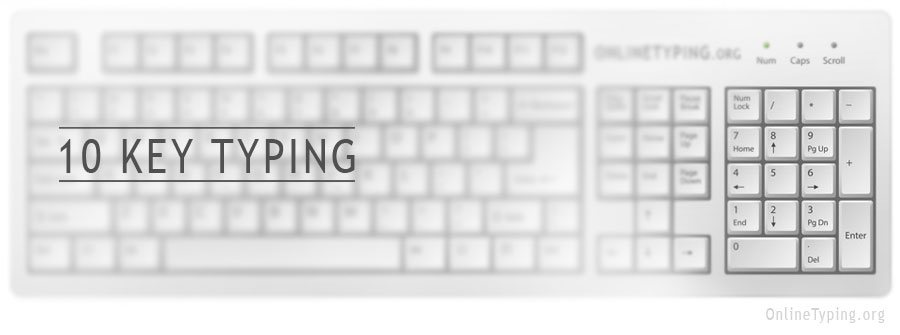
Such positions involve typing, transcribing, using a word processor and entering stream data into existing programs. The Kenexa Prove It data entry test is an important part of the assessment process for clerk positions requiring data entry.
10000 KEYSTROKES TEST SERIES
Many positions involve the entry of data into a series of database fields. In general, however, the minimum required score for the alphanumeric test is 8,000 KPH and the minimum required score for the 10-key test is 10,000 KPH (both with more than 95% accuracy). Different jobs also require different minimums of KPH. The minimum required KPH scores for the data entry alphanumeric test and for the data entry 10-key test are different. Hence, the calculation to convert from WPM to KPH is based on the formula: kph=wpm*5*50. The average number of keystrokes per word is five and the expected amount of minutes an employee would be entering data in a typical workday hour is 50. The KPH parameter in the data entry test is similar to the words per minute (WPM) parameter in the typing test. The results are calculated according to five parameters: elapsed time, field accuracy percentage, keystrokes per hour (KPH), keystroke accuracy and adjusted KPH. Of those, the most common are the Microsoft Office tests, which usually include Excel and Word assessments. You may also be asked to take other Kenexa Prove It skills tests, such as the Prove It Microsoft Office tests and the Prove It accounting test. In most cases, you will also be asked to take the Prove It typing test, which measures similar abilities (see more information about the Kenexa Prove It typing test). You will receive an email with a link to start an online Prove It data entry Alpha Numeric onscreen test, an online Prove It data entry 10-key onscreen test, or both. Each field contains between 4-6 numbers in an inconsistent order. The "+" key or the "Enter" key will navigate you between fields. There are eight fields on each record, which you are requested to fill by typing the numbers that present below. The test includes five records (each record on a different row within the same page).

The goal of this test is to measure your speed and accuracy when entering numeric data. It only tests how well you can type numbers. This test requires you to type numbers into a simulation of a spreadsheet.


Before the real test begins, you will be presented with a half-filled record to help you understand what you need to do during the test. The "Tab" key or the "Enter" key will navigate you between fields. It includes five records (each record on different page), with eight fields apiece, which you are requested to fill by typing the letters or numbers presented at the side of the screen. The goal of this test is to measure your data entry speed and accuracy. This test requires you to type data into a simulation of a database. Kenexa Prove It offers two types of data entry tests: Kenexa Prove It Data Entry Alpha Numeric Test To prepare for the Kenexa Prove It data entry test, JobTestPrep offers you a Prove It style practice pack to help you achieve your required score. It is part of the assessment process for clerical positions in the technical, industrial, and medical fields. The Kenexa Prove It data entry test is one of the most popular Kenexa Prove It tests. For positions that require data entry, it is crucial for employers to evaluate the applicant's accuracy and speed before they are hired, as it may have major efficiency implications in the long run.

General Information About Data Entry Testsĭata entry is an important skill used in many jobs today.


 0 kommentar(er)
0 kommentar(er)
